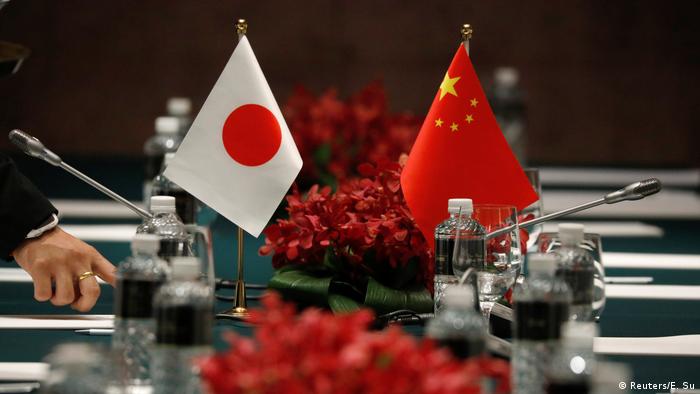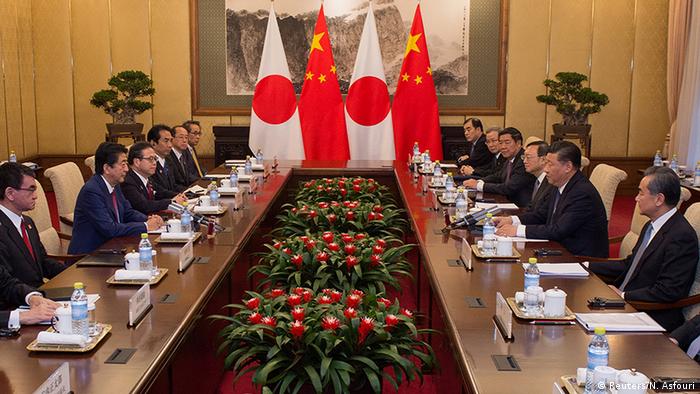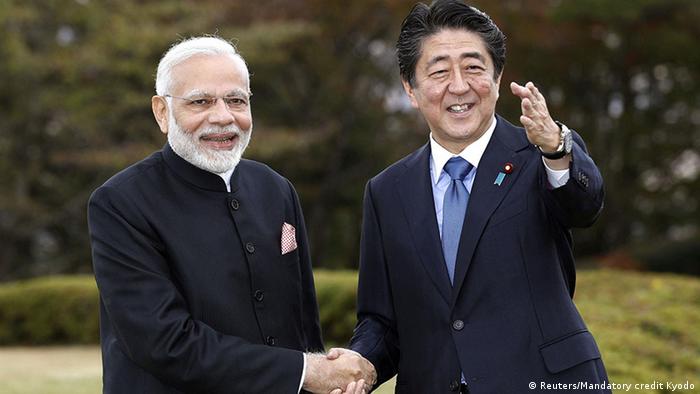After years of diplomatic ice age, Japan and China are moving closer together. At the same time Tokyo is forging alliances with India. Symptoms of a comprehensive Paradigm shift in Asia, writes Frank Sieren.

Japan’s Premier Shinzo Abe spoke of a “sunrise”. And indeed: After years of diplomatic ice age to go to Japan and China friendship to each other. Abe’s visit to Beijing at the end of last week – the first trip to China since his second inauguration as Prime Minister in 2012 – will usher in a “new Era” of bilateral relations between the two largest economies in Asia. The big differences – Abe’s right-wing course, the territorial disputes in the East China sea, as well as the not finally clarified the question of how to deal with the guilt of the Japanese war crimes in the second world war, the deal should have been for the moment left aside. The desire for cooperation is greater.
This is no coincidence: Japan and China are both targets in the commercial war of Donald Trump. Two accuses the US President of the United States by a balance of trade surplus. Trump has occupied a large part of the imports from China with punitive tariffs. Japan, he was under the threat of car-import duties forced to trade talks. For Japan, China is the largest trading partner. More than 30,000 Japanese companies are active in China. If China’s economy suffers, also suffers Japan.

A variety of the new agreement, it was agreed in Beijing
Also Japan in the case of the New silk road now
At the Meeting in Beijing the two countries agreed now around 500 cooperation agreements to the value of 2.3 billion US dollars in areas such as infrastructure, logistics, health and financial services. It is even managed Japan in China’s New silk road to integrate, without that Tokyo had to too make great concessions. Officially, Japan is not a Partner in China’s “Belt and Road Initiative”, which aims to bring together Asia, Europe and Africa economically close. Abe was allowed to continue on “international Standards” insist, should apply in the awarding of sub-projects. So he is on a line with industrialized Nations such as Germany, the demand that China is an “open, transparent, and economically rational” action, the financial Situation of participating countries are taken into account and you don’t have the measurements in debt crashes. Using 50 of the newly-agreed “third country agreements” may invest Japan is now without the silk roads framework agreement in infrastructure projects, which come at the end of the New silk road, about a city development project in a special economic zone in the East of Thailand.

DW-columnist Frank Sieren
Without Trump explicitly in the name, declared both sides at the talks in addition to the global trading system against attacks secure. This also includes the agreement of the Central banks of both countries, a 2012 abandoned currency swap to make business in force. This ensures that in the event of a crisis, the financial stability of the two countries, China and Japan lend each other in Yuan and Yen. The “foreign exchange swap” with a volume of up to 30 billion US-dollars is also a political Signal against the US Dollar. Beijing’s goal is that the Yuan will replace the US Dollar one day as a reserve currency in the global trade, or at least at eye-level acts. Trumps rough handling with its allies, Beijing is playing in the hands.
The United States is Japan’s most important military Ally in Asia. With the visit to Beijing and the explicit invitation to President Xi to visit in Tokyo, Abe sends a Signal to Washington asking for more attention. Because Abe knows that rapprochement with Beijing is indeed reason for Optimism – reason for euphoria, she is not. Already during his first term as Premier in October 2006, travelled to the Japanese demonstrations to China, Abe shortly after a wave of anti -. And even then, it was spoken from both sides of a turning point. But then Beijing and Tokyo fought back. At the same time, Abe has not forgotten how uncompromisingly Trump, giving up as one of his first acts as US President, the Pacific free-trade agreement TPP. The agreement was to unite many Asian countries, including Japan and South Korea, in a huge free trade zone with the USA. Beijing, could not be part of the Zone, would be put under pressure.

Narendra modi (li.) and Shinzo Abe met briefly after the return of the Japanese is also China
New coalitions without the US
Two years later, the global conditions have shifted, however, in a completely different direction. New Asian coalitions emerge, which would have been a couple of years ago is hardly conceivable. Shortly after his Beijing visit, received the Abe government of India chief Narendra modi in Japan, and invited him as the first foreign head of state to his holiday home at the foot of Mount Fuji. At subsequent talks in Tokyo, the two decided on Monday, in economic and security issues in the future, to work more closely together. “A strong Japan comes India and a strong India is in Japan,” said Abe. Japan is trying to have a balancing effect in Asia, instead of acting for the one and against the other. This is part of a remarkable development: The Asian Taring their power of balance always of the self-employed – without any of the self-interests of aid from the West to protect controlled. Good.
Our columnist Frank Sieren has lived for more than 20 years in Beijing.